Boys among men how the prep to pro generation redefined the NBA and sparked a basketball revolution First Edition Abrams
Visit to download the full and correct content document: https://textbookfull.com/product/boys-among-men-how-the-prep-to-pro-generation-red efined-the-nba-and-sparked-a-basketball-revolution-first-edition-abrams/
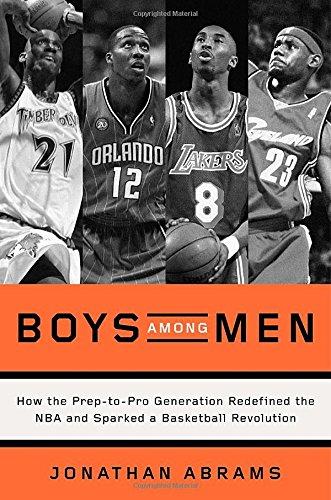
More products digital (pdf, epub, mobi) instant download maybe you interests ...

No Malice My Life in Basketball or How a Kid from Queensbridge Survived the Streets the Brawls and Himself to Become an NBA Champion Metta World Peace
https://textbookfull.com/product/no-malice-my-life-in-basketballor-how-a-kid-from-queensbridge-survived-the-streets-the-brawlsand-himself-to-become-an-nba-champion-metta-world-peace/

A Deal with the Devil (Boys of Preston Prep #2) 1st Edition Angel Lawson
https://textbookfull.com/product/a-deal-with-the-devil-boys-ofpreston-prep-2-1st-edition-angel-lawson/

Nocturia First Edition Abrams
https://textbookfull.com/product/nocturia-first-edition-abrams/
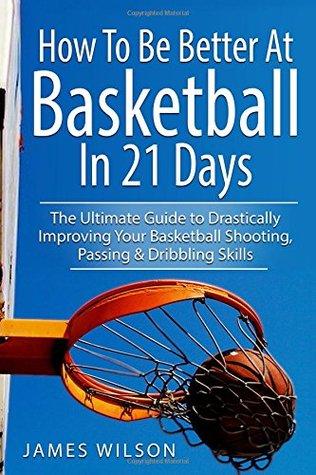
How to Be Better at Basketball in 21 Days The Ultimate Guide to Drastically Improving Your Basketball Shooting Passing and Dribbling Skills James Wilson
https://textbookfull.com/product/how-to-be-better-at-basketballin-21-days-the-ultimate-guide-to-drastically-improving-yourbasketball-shooting-passing-and-dribbling-skills-james-wilson/
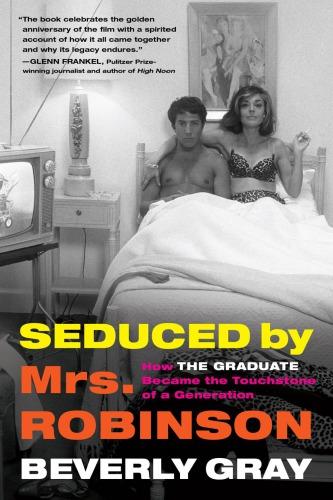
Seduced by Mrs. Robinson: how The Graduate became the touchstone of a generation First Edition Gray
https://textbookfull.com/product/seduced-by-mrs-robinson-how-thegraduate-became-the-touchstone-of-a-generation-first-editiongray/

Flirt Like a Pro How to Be an Irresistible Flirt Create Intense Sexual Tension and Make Women Go Weak at the Knees Dating Advice for Men How to Flirt and Attract
Women Dominic Mann
https://textbookfull.com/product/flirt-like-a-pro-how-to-be-anirresistible-flirt-create-intense-sexual-tension-and-make-womengo-weak-at-the-knees-dating-advice-for-men-how-to-flirt-andattract-women-dominic-mann/

Engaging Men and Boys in Violence Prevention Michael Flood
https://textbookfull.com/product/engaging-men-and-boys-inviolence-prevention-michael-flood/
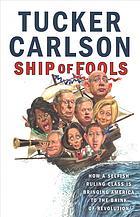
Ship of Fools How a Selfish Ruling Class Is Bringing America to the Brink of Revolution First Edition Tucker Carlson
https://textbookfull.com/product/ship-of-fools-how-a-selfishruling-class-is-bringing-america-to-the-brink-of-revolutionfirst-edition-tucker-carlson/

Jesus Revolution How God Transformed an Unlikely Generation and How He Can Do It Again Today Greg Laurie
https://textbookfull.com/product/jesus-revolution-how-godtransformed-an-unlikely-generation-and-how-he-can-do-it-againtoday-greg-laurie/
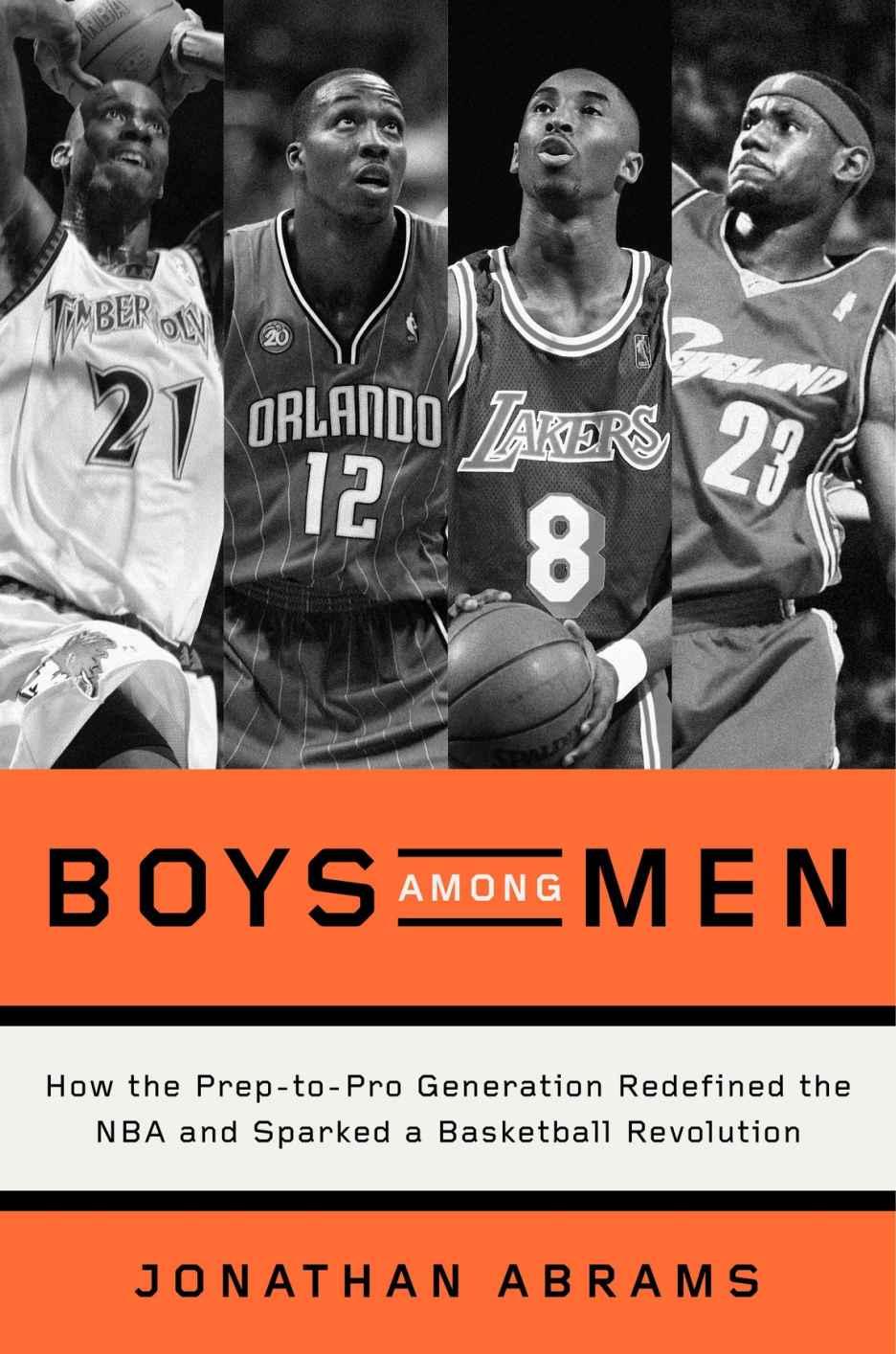
MORE PRAISE FOR BOYS AMONG MEN
“A penetrating look at basketball and the time when high school players could take the great risk of moving directly into the pro game, bypassing college. Readers will devour it, as I did. One of the best sports books in a long, long time.”
—Roland Lazenby, author of Michael Jordan: The Life
“A fascinating deep dive into the prep-to-pro generation, Boys Among Men is a must-read for NBA fans.”
—Chris Ballard, senior writer for Sports Illustrated, author of The Art of a Beautiful Game
“Abrams is the rare reporter who unearths new details about the most famous prep-to-pro stars, like Kobe Bryant and Kevin Garnett, and tells the complex stories of those who didn’t make it in the NBA. A must-read for any basketball fan.”
—Zach Lowe, staff writer for ESPN’s Grantland
“Kevin Garnett and Kobe Bryant blazed a trail in the mid-1990s, opening the NBA floodgates to every talented teen with a killer crossover and a dream. You know the success stories—Tracy McGrady, Jermaine O’Neal, LeBron James. You may know the flameouts—Leon Smith, Korleone Young, Robert Swift. You have never heard their journeys told with such rich detail and insight. Abrams’s book stands as the definitive word on the prep-to-pro era, and its lasting impact on the NBA, both the good and the bad.”
—Howard Beck, senior writer for Bleacher Report
“Prep-to-pro continues to be much debated and will be a timely issue again in the upcoming NBA collective bargaining. Jonathan Abrams gives the debate personality and life that will be entertaining and informative for basketball fans, in an inside look at the slam dunks and turnovers in the lives of those who made the leap from high school to the NBA.”
—Sam Smith, author of The Jordan Rules and There Is No Next


Copyright © 2016 by Jonathan Abrams
All rights reserved.
Published in the United States by Crown Archetype, an imprint of the Crown Publishing Group, a division of Penguin Random House LLC, New York. www.crownpublishing.com
Crown Archetype and colophon is a registered trademark of Penguin Random House LLC.
Library of Congress Cataloging-in-Publication Data is available upon request.
ISBN 9780804139250
eBook ISBN 9780804139267
Cover design: Jake Nicolella
Cover photographs: (Kevin Garnett) David Sherman/Getty Images, (Dwight Howard) Keith Allison/flickr, (Kobe Bryant) Nathaniel S. Butler/Getty Images, (LeBron James) AP Photo/Rich Pedroncelli
v4.1 r1
ep
Cover
Title Page
Copyright
Dedication
Introduction
Chapter 1
Chapter 2
Chapter 3
Chapter 4
Chapter 5
Chapter 6
Chapter 7
Chapter 8
Chapter 9
Chapter 10
Chapter 11
Chapter 12
Chapter 13
Photo Insert
Chapter 14
Chapter 15
Chapter 16
Chapter 17
Chapter 18
Chapter 19
Contents
Chapter 20
Chapter 21
Chapter 22
Chapter 23
Chapter 24
Acknowledgments
To Tanya, my everything.
To Jayden, my motivation.
To Mom, my inspiration.
INTRODUCTION
Bucky Buckwalter carefully placed the pile of hundred-dollar bills on the orange crate that doubled as a dining room table in Mary Malone’s living room. A room in the broken-down home belonged to her son Moses. A sizable hole in its wall allowed water in whenever it rained. The money for improvements and a better life had been placed before them by Buckwalter, a pro basketball executive. Buckwalter empowered Moses Malone with a choice. He offered Malone riches over poverty. Malone just had to forsake the rest of his childhood.
Moses Malone was an unassuming, gangly teenager from the South. He lived in Petersburg, Virginia, in a duplex off St. Matthews Street. The city was once a major Civil War conflict zone. In 1974, it hosted Malone, a teenager who happened to be basketball’s greatest recruiting prize since Kareem Abdul-Jabbar. The sport came easily to Malone. He competed in playgrounds against adults. The kids received orange juice for winning. If they lost, they rounded up spare change to give their elders some beer money. “We’d beat them so bad, they thought they were already drunk,” Malone recalled with a hearty laugh. College recruiters arrived in droves to watch Malone at Petersburg High School, where he steered his team to 50 straight victories and back-to-back state championships, leaving behind their families and checking into hotels for months. One day, a representative from Oral Roberts pledged that a higher power would cure Mary Malone’s bleeding ulcer should her son bless the school with his basketball abilities.
His talent traveled by word of mouth in an era when college recruiters routinely circumvented NCAA rules of amateurism. A wink could mean a new car for a recruit and a turned head could result in the transfer of a handful of money. “It was like the Wild West,” noted Howard White, then an assistant coach at the University of Maryland. Recruiters found Malone a reluctant listener. When they drove him in their cars, he feigned being asleep. When they came to his house, he pretended that he was not home. He had heard so many pitches that they had blended together by the time he finally committed to stay close to home and attend Maryland. When Maryland’s coach, Lefty Driesell, learned of Malone’s pending intentions, he camped outside the Malones’ home. Malone awakened at about 7 a.m., wiping the sleep from his eyes. Driesell, at his bedside, came into focus. Malone signed the offer before rolling over and returning to sleep.
Then, Buckwalter, his money, and the American Basketball Association came along. The upstart league was widely viewed as inferior to the National Basketball Association’s purer, more technical brand of basketball. The 11-team ABA originated in 1967 and predicated itself on showmanship, with its red-and-white ball and three-point line. The league existed in the NBA’s shadow, but exploited a crack in luring talent by accepting players with remaining college eligibility. The NBA finally relented, following Spencer Haywood’s antitrust lawsuit, and allowed players to leave college early and join their ranks if they could prove a financial hardship. But no high school player had ascended straight into basketball’s major leagues. (The Detroit Pistons had drafted Reggie Harding out of high school in 1962, but he first played in basketball’s minor leagues before joining the NBA.) By chance, Buckwalter, the director of player personnel for the ABA’s Utah Stars, had stumbled upon one of Malone’s high school All-Star Games. He marveled at Malone’s blend of height and quickness. A hard wind would have blown Malone over. He stood 6 feet 11 inches tall and weighed just over 200 pounds. But his feet danced like those of a boxer. They never stopped moving on the basketball court. The colleges wanted the best
basketball players. Buckwalter did, too. The Stars drafted Malone in the third round of the ABA’s 1974 draft. Most viewed the selection as little more than a publicity stunt, although it granted the Stars the ability to negotiate a contract with Malone.
Buckwalter had heard rumblings about the envelopes stuffed with money that one of Malone’s uncles requested just to let a recruiter meet with the teenager. Buckwalter had to sneak under a fence and narrowly avoided the jaws of a dog simply to knock at their front door. Mary Malone answered the door. Buckwalter glanced at the scarce furnishings. Mary Malone had four pictures on her mantel: one each of Jesus Christ, Martin Luther King Jr., John and Jackie Kennedy, and her son, Moses.
Buckwalter knew that Moses Malone had heard every possible spiel. He discussed being a pioneer with Malone. Malone stared and mumbled. Buckwalter offered to build the family a new house.
“This is yours,” Buckwalter said after he put the money on the crate. “This is for you and your friends. This isn’t like Maryland, where you never really see anything.”
Malone nodded and mumbled some more. He left the room and phoned Lefty Driesell. “Coach Buckwalter is over here and he’s got $25,000 in cash lying on my table,” Malone told Driesell. “He wants me to sign this thing. Should I sign it?”
Driesell did not miss a beat. “Tell them to leave,” he said. “And if they don’t, call the police. Now, if he puts a million dollars on your table, then call me back.”
Driesell’s enthusiasm could drown out the voices of the hundreds of other coaches who lusted after Malone. Driesell was a marvelous, relentless recruiter. He had told Malone that they could start counting their national championships together. He planned to pair Malone with John Lucas, a talented guard, and purchase him an insurance package should an injury derail his future professional career. Driesell sold the university to Malone. More importantly, he sold himself to Mary Malone. She supported herself and Moses, first as a practical nurse and then as a meatpacker. Moses’s father had left the family before his son turned two. Driesell told Mary Malone that
he was a God-fearing man and Maryland was a Christian-based program.
He was not going to lose Moses Malone without a fight. Driesell had successfully and skillfully fended off the other college recruiters. He now planned on struggling for Malone all over again. He preached the sanctity of college. He told the Malones that he had their best interests at heart and recommended that the Malones talk to an agent acquaintance, Donald Dell, and his partner, Lee Fentress, before making any decision.
The Malones agreed to the meeting. Dell found Malone to be aloof—as all the college coaches had. He wanted his attention.
“Moses, have you ever heard of slavery?” Dell asked.
Malone’s head snapped up. “Well, this contract you’ve been offered is slavery.” The contract, Dell said, ran for 16 years. Utah only guaranteed the first four years, with a team option for the next dozen years. “I hated the contract they offered him,” Dell recalled. “I thought it was chickenshit that they arrived at their house and put all that money on the dining room table of a poor person’s home. The whole thing smelled.” Dell wearily agreed to represent Malone in the negotiations. “I was very, very worried that he wouldn’t make the team or he would turn into something less than he wanted to be,” Dell said. “A young eighteen-year-old with no education. That’s what I was really worried about and I really didn’t sleep for a couple of weeks thinking about it.”
But Malone’s decision had been made long ago. At 14, he had scribbled in the back of his Bible that he wanted to be a professional athlete. To reject this opportunity meant turning his back on the gift. “I said if I make this decision, this decision is going to be on me,” Malone said. He had remained mostly quiet throughout the process. His muteness did not reflect the lack of interest it often projected. “What I do is listen and pay attention,” Malone said. “I listen to words and I can tell if they’re trustworthy or if they’re honest.”
The Maryland players offered Malone their combined per diem for food and laundry, about $15 a month from each player, in an effort to make him stay in college. His college career lasted all of five
days. John Lucas, his roommate, tried stirring Malone one morning. “C’mon, we’ve got to go,” Lucas said.
“Big Mo going pro,” Malone replied. “Big Mo can’t take these damn college hours.” He signed a seven-year contract with Utah that would pay him up to $3 million.
Moses Malone’s leap from high school did not immediately change professional basketball’s landscape. In a hierarchy of natural progression, players starred in high school and made their names in college before graduating to the pros. Darryl Dawkins and Bill Willoughby jumped to the NBA from high school a year after Malone’s decision. Malone joined the NBA in 1976, when the league absorbed much of the ABA, and carved out a Hall of Fame career. But Dawkins and Willoughby provided cautionary tales for different reasons as to why teenagers, both physically and mentally, were not prepared for the NBA’s rigors.
That thought persisted until a lanky teenager named Kevin Garnett reopened the dormant door in 1995. The game had been transformed by the time of Garnett’s arrival. Players commanded millions in salary, a large jump from $130,000—the average salary of an NBA player in 1976. Malone’s decision ultimately birthed the route into the NBA for one of the game’s greatest group of players, from Garnett to Kobe Bryant, Tracy McGrady, LeBron James, and Dwight Howard. They grew into stardom, while quickly advancing from their proms to playing against grown men whose paychecks accounted for how they fed their families. “When I see guys like Kobe, LeBron James, Kevin Garnett still doing what they’re doing, it just makes all the high school players that came before very proud,” Malone said. “We’re doing what we’re doing because we were the best in high school and we ain’t got to go to college for four years to be the best.” Malone was proud of his place in history, before his death from heart disease in September 2015, just a few weeks after Darryl Dawkins died from a heart attack.They did not first toil in minor leagues, as in professional baseball and hockey. They did not
have to wait three years after high school before becoming professionals, like NFL players. Most became successful and, lacking stardom, made more money than they would have otherwise dreamed of. A few failed and faded with their chance at fame and fortune eternally lost.
They all started at the same place. At an early age, they showed remarkable physical gifts and someone pegged each of them as a phenom. The days of a talent undiscovered until college are long gone. High school games are televised across the country. Elementary-school children are ranked nationally. “It’s the same reason we want to see young, gifted actors, musicians, or pianists,” said Jeremy Treatman. Treatman served as one of Kobe Bryant’s high school assistant coaches and later scheduled and broadcast marquee high school games. “They’re phenoms,” he continued. “They’re prodigies. LeBron James was a prodigy. Dwight Howard’s a prodigy. Kobe Bryant’s a prodigy. When someone can do things that no one else can, you’re just blown away by it. Even when you’re seeing a seven-year-old girl sing the national anthem perfectly and you’re blown away for days. It’s that kind of thing.” But the attention often came with a price: an abbreviated childhood and mostly unrealistic expectations. “The hustle and bustle, prostitution, drugs, gang banging, and all that [in his neighborhood] to the AAU [Amateur Athletic Union] circuit was no different,” said Tyson Chandler, taken second overall in the 2001 draft out of high school. “It was the same hustle. It was just legal. It was definitely the same characters I would see on my street corner, just disguised different. My life was accelerated because I had to learn how to protect myself and use people who thought they were using me and do all of that to get to where I wanted to get to. I was very aware of what was going on at such a young age. That innocence is kind of thrown out the window.”
Malone’s decision to fulfill his own prophecy mutated over the years. A decision faced by a modern NBA prospect who considered the jump from high school became saturated with too many parties all with a stake in his future: the coaches, the families, the shoe
companies, the NBA, the handlers, the agents. Former NBA commissioner David Stern began presiding over NBA drafts that may as well have been high school graduations. The procession stopped in 2006 with a rule mandating draft-eligible players be at least one year removed from high school. “It’s a failing of so many institutions, for which I think we are drawn into it,” Stern said. “I don’t mean to take any attention, cut away any responsibility, because we’re part of the system, but we’re not the lead part of the system.”
They are the end goal, the league kids dreamed of and, for a while, played in. The ban on high school players is continually discussed. Some want it eliminated. Others want to extend the league’s age minimum to at least 20 years. “It’s just not right,” said Jermaine O’Neal. He jumped to the NBA from high school in 1996. “You can go to the military and fight a war at eighteen years old and give your life at eighteen years old. Those people are going to war to try to better their lives. It’s life or death in the military. You’re allowed to carry a gun and give your life. That’s the ultimate sacrifice. So my question is, Why aren’t you allowed to do something as simple as play basketball?”
This kid is about to hyperventilate, John Hammond worried to himself. Hammond, a Detroit Pistons assistant coach, had flown to Chicago in 1995 for the NBA’s annual predraft camp. The league’s movers and shakers attended to mix and mingle. Hammond had walked into the Hyatt Regency’s lobby a couple of days earlier and run into the agent Eric Fleisher. Fleisher asked Hammond if he would conduct a workout in front of NBA executives for one of his prospects, a youth named Kevin Garnett. Hammond quickly agreed. He had heard of him. Everyone had. Garnett vied to become the first high school player to enter the NBA directly since Darryl Dawkins and Bill Willoughby had done it two decades earlier. Garnett attracted NBA royalty the day of his workout at the University of Illinois–Chicago. Elgin Baylor, Pat Riley, Kevin McHale, Donnie Walsh, Doug Collins, and other basketball dignitaries packed themselves into a bleacher beneath one of the baskets for a firsthand peek at Garnett.
The NBA had seen robust growth in recent years, gaining greatly in popularity and profitability. When Magic Johnson and Larry Bird entered the league in 1979, it “was seen as far too black, and the majority of its players, it was somehow believed, were on drugs and willing to play hard only in the last two minutes of the game,” wrote the journalist David Halberstam. Interest in the college rivalry shared by Johnson and Bird carried into their professional careers. Still, CBS continued airing some NBA championship games in the early 1980s on tape delay. The network played the games near midnight, when people who did watch television that late routinely
tuned in to NBC’s Johnny Carson. Nearly the whole country watched The Dukes of Hazzard and Dallas in 1980, instead of the sixth game of the NBA Finals between the Los Angeles Lakers and the Philadelphia 76ers. A fresh-eyed Johnson played all five positions in the absence of an injured Kareem Abdul-Jabbar and put on a masterful, transformative performance. But few had watched it. An ambitious David Stern sought to change the league’s image as its commissioner four years later. Stern cracked down on the league’s drug problem and promoted the All-Star Game as its signature event. His ascension as commissioner coincided with Michael Jordan’s NBA arrival. Jordan became the vehicle Stern used to vault the game’s popularity into the corporate stratosphere. Jordan played gracefully on the court and, at times, appeared to defy gravity. He evolved into a worldwide icon, more recognizable than most actors and politicians. Companies enjoyed partnerships with Jordan and, in turn, with the NBA, and lucrative television deals resulted in surging salaries.
By the summer of 1995, the average NBA salary had ballooned to nearly $2 million. That provided a monetary incentive for collegiate players to declare for the NBA before their amateur eligibility expired. Among the first 15 picks of the 1990 draft, 13 had been college seniors. By 1994, only one college senior was drafted in the first seven selections. The NBA had become a high-stakes, cutthroat business. Executives drafted players based on potential as much as on proven talent. A younger prospect meant a higher ceiling. A higher ceiling meant a prospective star in a sport where one dominant player can carry a franchise. The high school–to–pro route was thought to be closed, but no rule prevented a player from trying. Shawn Kemp had become a star by jumping to the NBA in 1989 after leaving the University of Kentucky and Trinity Valley Community College without ever having played a game at either school.
The storyline of a talented prodigy proved too tantalizing for NBA executives not to evaluate Garnett’s workout. Garnett had been compared to everyone from Bill Walton to Alonzo Mourning to Reggie Miller. Hammond had spent his life around basketball as a
player and coach. Players, in his experience, usually masked their nervousness with an overabundance of confidence as they got older, wearing it like a cheap cologne. Garnett did not disguise anything. He couldn’t. He was what he was, a kid who would have his entire future determined over the course of the next precious moments. The workout had not even started. The boy could not catch his breath. His heart thumped. His chest heaved up and down, up and down. Hammond walked Garnett away from the executives to the court’s far side. “Stand here and get your breath,” Hammond advised. He positioned Garnett at the free-throw line. Garnett leisurely shot a couple, trying to regain his composure. He had once dreamed of playing college basketball. So many people told him he could jump straight to the NBA that he had changed his mind. Garnett glanced at the executives. Some looked bored, as if they had come out of deference to Fleisher, who had player clients scattered throughout the league. Maybe they were right. Maybe he and Bill Willoughby were wrong. Willoughby had encouraged Garnett to opt for the NBA in a telephone call arranged by Fleisher. Garnett was a historian of the game and listened intently. Many, after all, considered Willoughby the primary reason no high schooler had attempted the sizable jump in years.
College coaches recruited Bill Willoughby in 1975 with the same fervor used on Moses Malone and Darryl Dawkins. Willoughby stood 6 feet 8 inches tall and played forward. Yet he snaked in and out of the lane like a guard. Lefty Driesell’s sermons to him landed on deaf ears. Willoughby nearly ended up at North Carolina. But Kentucky’s Joe B. Hall became the coach who ultimately got Willoughby’s signature on a letter of intent. “Big arena, beautiful women, eating Kentucky Fried Chicken, watching horse races” is how Willoughby described Lexington. He returned to finish his senior year at Englewood’s Dwight Morrow High School in New Jersey, intent on becoming a Wildcat.
One recruiting trip still nagged at Willoughby. He had visited Maryland during the summer when Malone still thought he would attend the university. Willoughby spied Malone working at a construction job. The image of Malone, nearly seven feet tall, wearing dirt-caked clothes and a hard hat, remained with Willoughby. Driesell had secured Malone the gig so he could have a bit of spending money. “He had to be at this guy’s house at 6:30 every morning,” Driesell recalled. “These college kids with jobs, you tell them to get there at 6:30, they don’t show up. He said that Moses was sitting on his front porch at 6:00 a.m. every morning waiting for him, never missed a day, was never late.” Malone had no use for that hat now, Willoughby thought. He had become a pro and made hundreds of thousands. “This guy went to the ABA,” Willoughby said of his thinking at the time. “He’s playing against George Gervin and Julius Erving. I could be next.” Willoughby instructed Bob White, his high school coach, to return interest should any pro scouts inquire about him.
One NBA executive had paid close attention to Malone’s assimilation before training his eye on Willoughby. Pat Williams had inherited the hapless Philadelphia 76ers, a once-proud franchise fallen on troubled times. The team slipped and staggered to a record 73 losses in 1972–1973. Williams, Philadelphia’s general manager, tried everything to revive interest in the franchise. Long ago, he had played minor league baseball, where players would be routinely drafted into the sport from high school. He assumed basketball players could not take the same route.
That is, until he saw Malone on the Stars. Malone more than held his own, Williams mused. No college prospect enticed him in the approaching draft. Williams wondered if another Malone was out there somewhere. If so, he could outsmart the rest of the league and jump-start the franchise. Williams homed in on Bill Cartwright and Darryl Dawkins. Cartwright stood taller, but was also much thinner. Word trickled back that his mother insisted he attend college. Dawkins, an Orlando native, was about 6 feet 10 inches tall with a chiseled frame. “Man-child” was the oft-used description. Williams
selected Dawkins fifth overall in 1975, making Dawkins the first player drafted directly from high school who would immediately play in the NBA. Williams pointed Dawkins toward Herb Rudoy, an agent who did not share the same moral concerns as Moses Malone’s agent. “I am a believer in capitalism, that if a young person has a talent that’s good enough, he ought to go to the pros,” Rudoy said.
Williams figured he had one-upped the league and could draft all the top high school talent, develop them, and field a super team in a few years. He told Willoughby that he would pluck him as well with Philadelphia’s next pick. A reporter called a surprised Willoughby and alerted him that the Atlanta Hawks, instead, had chosen him 19th overall. In some ways, the Hawks had outsmarted themselves. Atlanta took David Thompson and Marvin Webster in the first round. Thompson and Webster chose the ABA and Willoughby now merited more money. The ABA’s Denver Nuggets had also selected Willoughby.
He had choices, and college looked less likely among them. Willoughby’s mother worked at a factory. His father was a mechanic. They left the decision to him, Willoughby said. He went to the NBA, signing for $1.1 million over five years. “I had clothes,” Willoughby said. “It didn’t strike me until I turned 18 that I didn’t have no money in my pocket. You want to go to the movies, you have to ask your mother or father. I never had a job. I wasn’t allowed to cook. I wasn’t nothing.”
The move stunned Joe B. Hall. The Kentucky coach had also recruited Malone and Dawkins, losing all three to the professional leagues. Hall blamed some of the people around Willoughby for trying to capitalize off him and pointed a finger toward his high school coach. “[Bob White] wanted to go with him [to Kentucky],” Hall said. “I had no place for his coach. I was real surprised about Willoughby because we had talked it over with his parents and they were happy that he was not going to turn pro. They didn’t feel he was ready. Not basketball-wise, but just socially mature to handle it.” Willoughby lacked life experience. All he had done in his first 17 years of life was play ball, first in New Jersey and then on the famed
courts in New York. His parents offered to move to Atlanta with him. Willoughby decided he wanted to learn and live on his own. He took his driver’s test after purchasing his first car, a Lincoln Town Car. He only used it to drive to the arena, home, the airport, or a diner. “I just felt by myself,” he said. “I was a loner.” He still thought about his future. Willoughby received a $500 monthly allowance from his agent and wanted to preserve the bulk of his earnings.
He planned on dominating the NBA as he had in high school. “They thought I was going to be the next Dr. J,” he whimsically reminisced. His adolescent body did not allow it. Willoughby’s pushes against high school kids became gentle nudges to his grown opposition in the NBA. He suffered in the face of the game’s physicality and withered when he encountered any coaching criticism. He had always been the star and critiques were foreign and unwelcome.
In an early game, Willoughby drove toward the basket and dribbled through his legs. The ball bounced helplessly off him, out of bounds. “This isn’t the playground,” said Cotton Fitzsimmons, Atlanta’s coach, as he yanked him from the game. Fitzsimmons’s departure the following year did not improve Willoughby’s outlook or up his playing time. The Hawks hired Hubie Brown away from the ABA. Brown was a disciplinarian and a tactician, known to time his practices to the second. He had little use for a player unprepared to treat the profession like a job—even if that player was only a year out of high school. The coach, Willoughby said, relentlessly cursed at his team and played favorites. But Hal Wissel, Brown’s assistant coach, recalled those days much differently. Wissel said Willoughby had “potential with no fundamental skills.” Brown once asked Wissel to teach Willoughby a few post moves before practice. Someone from the front office interrupted practice a couple of days later, telling Brown he had an urgent phone call. It turned out to be Willoughby’s agents complaining about his having to arrive early, Wissel said. Brown requested two things from every player: be on time and do your job. “Bill Willoughby didn’t do number two,” Wissel said. “He
didn’t do his job. These are pros. These are men. And he wasn’t ready for that.”
In Philadelphia, Darryl Dawkins also came into the league unprepared. Without school, he suddenly had money in his pocket and hours of the day to fill. “The hardest part is what are you doing during idle time?” he said. “I started writing poetry. I stated cooking and tweaking recipes. I’ve always had a fetish for cars and I did like women. So I occupied my time that way, besides playing basketball.” Dawkins offered colorful quotes, wore even more colorful clothing, and shattered backboards with his thunderous dunks. He named his finishes: the Rim Wrecker, the Go-Rilla, the Look Out Below. He claimed he came from the planet Lovetron. Dawkins volunteered whenever the team needed someone at a community event. He was also the first to attend parties. He wore a lime-green suit to his 19th birthday celebration. “You could see him coming from five miles away,” said his teammate World B. Free. Dawkins’s mind seemed forever split between the game and what to do after the game. “Present,” he once called before realizing Coach Gene Shue was not taking roll call, but subbing him into a game. Dawkins was good. Many expected him to be great. But he considered the game to be a game, while his older teammates regarded it as their livelihood. Entering the NBA early prolonged his adolescence, instead of hastening his maturity. “He was immature when he came in,” said teammate Steve Mix. “The physical part was there. The mental part wasn’t.”
Dawkins at least enjoyed the game. Willoughby had an undistinguished career, meandering through six teams in eight years. He had trouble accepting that he would never become the star he was once projected to be. His career highlight arrived in 1981 as a Houston Rocket when he did the impossible and blocked Kareem Abdul-Jabbar’s skyhook in a playoff game. Del Harris, his coach in Houston, remembered Willoughby as softhearted and likable, but, also as an introvert who masked his feelings. Harris once requested that Willoughby run sprints when he sustained a hand injury. “He insisted to my assistant, Carroll Dawson, that I was punishing him
for being hurt,” Harris recalled. “He could not accept that I was trying to keep him in shape while he was out.”
Life had come full circle. Bill Willoughby had started as a phenom in New Jersey. He tried to hang on to the tatters of his NBA career by appearing with the New Jersey Nets in their 1985 summer camp at Princeton’s Jadwin Gym. The roster featured rookies and free agents, players with little chance of making a regular-season roster. Willoughby glanced across the court during a summer game against the Knicks and noticed some unwelcome faces. Willoughby said that he had been battling concussions and that some of the Knicks players sought to inflict further injury on him during the game.
Willoughby played four minutes and ran into a hard screen. He remembers hearing Knicks players saying, “Get this motherfucker.” Bob MacKinnon, the Nets general manager and acting coach, tried reinserting Willoughby into the game’s second quarter. “I don’t want to,” Willoughby said. “Then go home,” MacKinnon instructed.
“And he did,” MacKinnon said to the Record, a newspaper in New Jersey. “I have no explanation for it.”
Willoughby asked the team’s athletic trainer to open the locker room so he could collect his belongings. “You’re not going to make the pros going down Route 80,” the trainer told Willoughby. “They can take my money,” Willoughby responded. “But they’re trying to hurt me.”
Willoughby had a couple of other tryouts. He later waited day after day, week after week, year after year for a phone call that never came, one from an NBA executive offering a last chance. Willoughby’s basketball career ended when he was 28 years old. Retirement did not treat Willoughby any more gently. His agents— whom he had awarded power of attorney—had embezzled most of his savings. Willoughby won a judgment for $1.1 million, but could not collect the majority of the sum when one of the agents declared bankruptcy. Willoughby lost his home, moved in with his parents, and battled depression. He came to symbolize everything that could go wrong when a franchise hitched its hopes to a high school player.
Willoughby was a man among boys in high school. He was a boy among men in the NBA. The Hawks saw Willoughby’s potential and predicted his future. They did not factor in his physical immaturity and emotional instability as significant hurdles. Years later, Willoughby took steps to straighten out his life. He enrolled in Fairleigh Dickinson University’s regular day program on the persistent advice of a close friend and with assistance from the NBA’s Retired Players Association. He kept cramming his frame into his 1984 Mercedes-Benz, day after day, to attend class.
Willoughby graduated from Fairleigh Dickinson in 2001 at the age of 44. He cried upon realizing that Continental Airlines Arena was hosting the commencement—the same building where Willoughby had played his final NBA game in 1984. False hope and faded dreams had followed that appearance until now.
The school asked Willoughby to address the graduates.
“I chose basketball over education,” he said. “I chose a big contract over education. I soon found out that life is about so much more than money and that success on the court lasts a very short time.”
Willoughby had just started to emerge from his troubles in 1995 when he offered Garnett much different advice.
“Yeah, I’m broke,” Willoughby said. “I’m scared because the guy is saying he’s bankrupt and I could win and still not get anything. Know what’s happening. You got your agent. You got your business manager. You got your mother, your father, sister, brother, girlfriend. What’s really yours? Even if you buy them a house, now they want a car, now they want jewelry. Now they want clothes.” Garnett told Willoughby how much money he expected to make should he declare for the NBA. “And you thought twice?” Willoughby asked. “What are you going to do in school? Take wood shop? Ceramics? Theater? You’re still thinking? I’m in school now. You can go to school in the off-season and take classes. Then, you can finish when you retire.”
Today, he is known as the Kevin Garnett who scowls, growls, and talks trash, not as the bundle of raw nerves that showed up in 1995 before the executives. But Garnett’s nervousness had bubbled over before. His formative basketball education took place at Springfield Park in Mauldin, a city outside of Greenville in South Carolina. The park housed a playground, benches, and baseball fields. Garnett only cared for the blacktop basketball court and its chained nets that rang like a cash register whenever a ball snapped through them. One measured his manhood in points and his self-worth in aggressiveness at the park. No one was more man than Baron Franks. They called him Bear for good reason. Franks stood 6 feet 4 inches tall and weighed nearly 300 pounds. Garnett was about 13 or 14 years old, with no discernable skills, when he mustered enough courage to play at Springfield. Franks was about four years older and light-years ahead in the art of trash talk. He saw Garnett and sized down another victim. “I’ve got your mind in my pocket,” he told Garnett after he scored. “I own you,” Franks said, scoring again. He talked about Garnett’s mother, Shirley Irby, and his sisters. “Get off my court,” Franks yelled to Garnett after each inevitable loss. Garnett did not verbally retaliate. He maintained a straight face and returned daily. He leapfrogged Franks in height within a year. Garnett still wondered why Franks seemed to have it in for him. The trash talk never stopped. Word of Garnett’s frustration over Frank’s verbal assaults filtered back to the source. Franks addressed it by wrapping his arm around Garnett. “Basketball, it’s my love,” Franks
explained. “When I play, nothing else matters. I take it seriously, whether it’s a pickup game or not. It’s that big.”
Franks found that Garnett appreciated the game in the same way. Garnett bickered often with his stepfather, Ernest Irby. Irby did not see any need to put up a hoop in the family’s backyard when Garnett requested one. Garnett’s biological father sent checks, but was mostly absent from his life. The park became Garnett’s soothing confidant, where nothing existed except the ball, himself, and the basket. Garnett stayed at the park so late that police chased him home. He sometimes arrived so early, dribbling a ball over rocks and gravel from his home on Basswood Drive, that he beat the day’s sunrise. The game meant so much to him, something his teammates at Mauldin High soon realized. Garnett made varsity as a freshman, despite Coach Duke Fisher’s preference for underclassman to first pay their dues at a lower level. Fisher had played on the freshman team at the University of North Carolina and seared discipline and defense into his team’s DNA. Garnett accepted and excelled at both, gradually becoming more aggressive on offense. The team lost one Friday night during Garnett’s freshman season. Sal Graham, a sophomore guard, walked into the locker room and discussed weekend plans with the rest of the team. “Hey, man, you coming to the party with us tonight?” Graham asked Garnett. But Garnett was despondent. He covered his face with a towel. “We lost the game because of me,” Garnett said in tears. “He took it so personal that no matter what the score was, he felt, as a fourteen-year-old freshman, that he should have won the game for us,” Graham recalled.
Garnett loved the aspect of playing on a team, the strength of a group with a common goal. He preferred blending in among his teammates and classmates away from the court. But the same size that helped him excel on the court prevented him from fading into the background off it. Garnett would pull a teammate into the frame when a fan wanted a picture of just him. If Garnett signed a program for a spectator, he passed it along to a teammate and had him autograph it as well. “He was so much taller than everybody else,” recalled Betty Mitchell, a guidance staff officer at the school. “You
could spot him at the end of the hall. He wanted to be a regular teenager, like everybody else at the school. The adults here in the building probably put a little bit more on him than he was ready for at the time.” Garnett’s history teacher, Janie Willoughby (no relation to Bill Willoughby), became a second mother to him. Garnett couldn’t sit at a regular desk without doing contortions, so Willoughby brought in an old living room chair from her home. He was a reluctant student. She knew how to push, prod, and edge him along. He once delivered an oral report on the Boston Tea Party, pausing every few moments to ask Willoughby if he had done enough to warrant a passing grade. “No, not yet,” Willoughby patiently replied several times before finally accepting his plea to finish. Another time, Garnett helped a student as she nervously stumbled through her oral report. Garnett asked a question each time she paused to get her back on track. Willoughby beamed, thinking that Garnett did not want the spotlight on himself, but would help others on their way.
Garnett earned an invite to the Nike All-American Basketball Festival in 1993. The nation’s top 125 high school players gathered to be judged by about 500 college coaches over a five-day period in Indianapolis. He teamed with players whose high schools treated them like royalty, a far cry from how he felt at Mauldin. The boys broke into teams for scrimmages. William Nelson, the coach at Chicago’s Farragut Career Academy, noticed all the camp’s top players walking toward other instructors. A sinewy Garnett came up to him. I got the skinniest big man? Nelson thought. That’s not fair.
“How you all give me the little guy?” Nelson asked the tournament’s planner.
Garnett was within earshot. “Come on man, quit tripping,” he said.
“Quit tripping?” Nelson retorted. “You skinny, man.”
Nelson prepared for a long day of watching Garnett being shoved and bullied on the court. He figured his team could only win by pushing the tempo and instructed them to run every possession. They did, winning 13 of 16 games behind the play of two juniors,
Garnett and Antawn Jamison. Garnett experienced liberation during the games. In South Carolina, Fisher rebuked Garnett whenever he screamed after dunking. Fisher was a purist and considered the outburst a form of showboating. “Scream louder if that’s what works for you,” Nelson advised. Garnett looked at Ronnie Fields, Nelson’s star guard, whom he had befriended at the camp. “Is that your coach?” he asked Fields. “Our coach is nowhere near that. It’s like night and day. I didn’t know they had coaches like that.”
He had grown more that summer, to the point that the Mauldin coaching staff needed a moment to recognize Garnett upon his return to South Carolina for his junior year. Every year the Mauldin Mavericks looked forward to the annual Beach Ball Classic in Myrtle Beach. The Christmas tournament brought together some of the country’s most talented high school players on the East Coast. Mauldin had hopes of a high tournament placing in January 1994. Garnett was eager to become better known nationally, like one of the team’s early opponents, LaMarr Greer. Greer played for New Jersey’s Middle Township High School and few around the country could fill up a basket like the Florida State recruit. In the game, Greer dunked on Garnett early on, letting Garnett know about it. “You’re mine,” he said. Garnett’s mind returned to Bear, the playground, and the taunts. But he was older, better, and stronger now. Garnett retaliated with his own dunk and chirped right back at Greer. “It turned into a one-on-one show between those two guys, everybody else get out of the way,” said Murray Long, Garnett’s teammate. “It was just a tremendous display of who he was getting ready to become.” Garnett and Greer went back and forth. Whenever Greer made a shot, Garnett answered. Mauldin lost, 69–62. Garnett had 35 points, only missing 2 of his 17 shots, with 7 blocks. Greer countered with 37 points and 11 rebounds. Garnett finished with 40 points, 26 rebounds, and 8 blocked shots in another tournament game that went into five overtimes, prevailing over Los Angeles Loyola. In just three games, Garnett totaled 101 points, 56 rebounds, and 21 blocked shots. “We had seen flashes of greatness before, but that stands out
Another random document with no related content on Scribd:
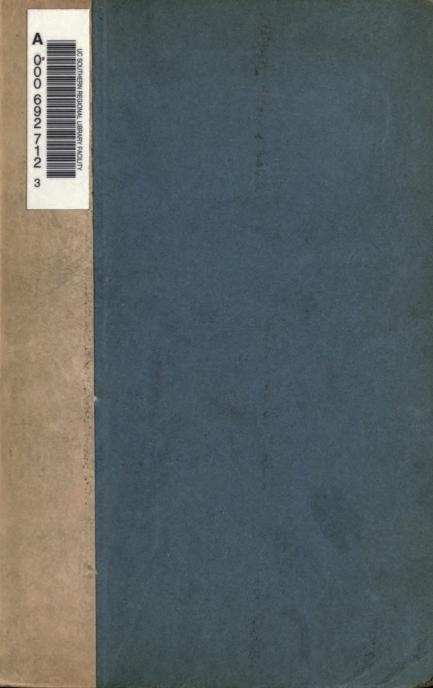

The Project Gutenberg eBook of The descent of the sun: A cycle of birth
This ebook is for the use of anyone anywhere in the United States and most other parts of the world at no cost and with almost no restrictions whatsoever. You may copy it, give it away or re-use it under the terms of the Project Gutenberg License included with this ebook or online at www.gutenberg.org. If you are not located in the United States, you will have to check the laws of the country where you are located before using this eBook.
Title: The descent of the sun: A cycle of birth
Author: Unknown
Translator: F. W. Bain
Release date: July 29, 2022 [eBook #68641]
Language: English
Original publication: United Kingdom: Methuen & Co. Ltd, 1903
Credits: Al Haines
*** START OF THE PROJECT GUTENBERG EBOOK THE DESCENT OF THE SUN: A CYCLE OF BIRTH ***


